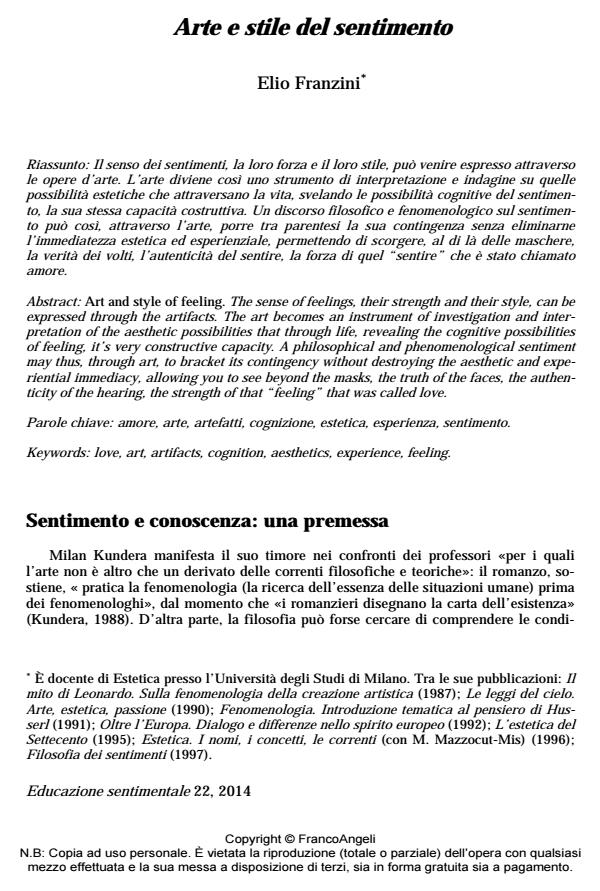Arte e stile del sentimento
Journal title EDUCAZIONE SENTIMENTALE
Author/s Elio Franzini
Publishing Year 2014 Issue 2014/22 Language Italian
Pages 9 P. 42-50 File size 71 KB
DOI 10.3280/EDS2014-022004
DOI is like a bar code for intellectual property: to have more infomation
click here
Below, you can see the article first page
If you want to buy this article in PDF format, you can do it, following the instructions to buy download credits

FrancoAngeli is member of Publishers International Linking Association, Inc (PILA), a not-for-profit association which run the CrossRef service enabling links to and from online scholarly content.
Art and style of feeling. The sense of feelings, their strength and their style, can be expressed through the artifacts. The art becomes an instrument of investigation and interpretation of the aesthetic possibilities that through life, revealing the cognitive possibilities of feeling, it’s very constructive capacity. A philosophical and phenomenological sentiment may thus, through art, to bracket its contingency without destroying the aesthetic and experiential immediacy, allowing you to see beyond the masks, the truth of the faces, the authenticity of the hearing, the strength of that “feeling” that was called love.
Keywords: Love, art, artifacts, cognition, aesthetics, experience, feeling.
- Blumenberg H. (1996). Tempo della vita e tempo del mondo. Carchia G., a cura di. Bologna: il Mulino.
- Freud S. (2000). Opere. VIII volume. Torino: Bollati Boringhieri.
- Kant I. (1995). Critica del Giudizio. Bosi A., a cura di. Milano: TEA.
- Kundera M. (1988). L’arte del romanzo. Milano: Adelphi.
- Kundera M. (1994). I testamenti traditi. Milano: Adelphi.
- Musil R. (1991). Il giovane Törless (Die Verwirrungen des Zöglings Törleβ). Roma: Newton Compton editori.
- Proust M. (1981). Il tempo ritrovato. Milano: Mondadori.
Elio Franzini, Arte e stile del sentimento in "EDUCAZIONE SENTIMENTALE" 22/2014, pp 42-50, DOI: 10.3280/EDS2014-022004